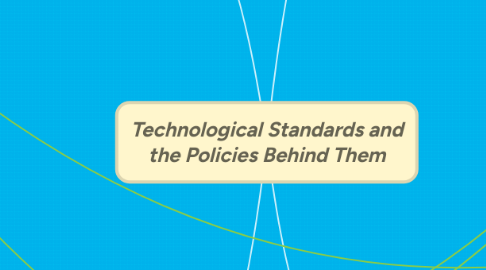
1. Learning and Technology Policy Framework
1.1. Student-Centred Learning
1.1.1. The outcomes include students being able to access, share, and create knowledge using technology.
1.2. Research and Innovation
1.2.1. Teachers and administrators stay up to date with the technology that their students will be exposed to, ensuring that they are able to answer questions.
1.3. Professional Learning
1.3.1. Teachers and administrators are capable of using technology to create individualized learning opportunities for their students.
1.3.1.1. Connects to Model Digital Age Work because they are both able to use technology accurately and fluently.
1.4. Leadership
1.4.1. Teachers, administration, and the government involved are competent and confident when it comes to answering questions and leading students to be the same.
1.4.1.1. Connects to Model Digital Age Work because again they both involve technological fluency.
1.5. Access, Infrastructure, and Digital Learning Environments
1.5.1. The teachers and administrators have access to devices in their classroom that make it possible to incorporate technology into their lessons.
2. ICT Program of Studies
2.1. Outcome Organization
2.1.1. Communicating, inquiring, and decision making all lead to successful organization skills.
2.1.1.1. Connected to design and development because they both require organizational skills.
2.2. General and Specific Outcomes
2.2.1. The general outcomes gives the basic instruction to the teacher on the points that will then be expanded upon for the students.
2.2.1.1. Connected to Creative Comunicator because the points have to get across clearly.
2.3. Rationale and Philosophy
2.3.1. The ICT is not to stand alone, but rather to be incorporated into the curriculum itself and to be infused into the core courses.
2.3.1.1. Connects to Knowledge Constructor because the ICT has to be incorporated the same way that students need to experience technology and education.
2.4. Graduation Competence
2.4.1. Separated into three separate parts, with each part flowing into the next.
2.5. Communicating, Inquiring, Decision Making and Problem Solving
2.5.1. Students will seek alternative viewpoints using information technologies.
2.5.1.1. Connects to Research and Innovation because both seek answers.
3. ISTE Standards for Teachers 2008
3.1. Design and Develop Digital Age Learning Experiences
3.1.1. Design, develop and customize the learning experience for the children to make it as fulfilling as possible.
3.2. Model Digital Age Work
3.2.1. Demonstrate fluency so that you are able to collaborate with the children and answer all their questions.
3.3. Facilitate and Inspire Student Creativity and Learning
3.3.1. Promote, engage and collaborate with the students in a way that makes them aware of their surroundings and real-world technological options available.
3.4. Promote and Model Digital Citizenship and Responsibility
3.4.1. It is key that once students are aware of the abilities of technology that they are taught what is and is not acceptable behaviour.
3.5. Engage in Professional Growth and Leadership
3.5.1. Become the advocate for the students when it comes to the importance of technology in learning and in the school community
4. ISTE Standards for Students 2016
4.1. Empowered Learner
4.1.1. Students need to want to allow technology to become a key component in their learning
4.2. Digital Citizen
4.2.1. Students need to work towards creating their digital identity.
4.3. Knowledge Constructer
4.3.1. Students need to make their learning experiences meaningful to themselves.
4.4. Innovative Designer
4.4.1. Students need to learn how to use technology to help shape their ideas.
4.5. Computational Thinker
4.5.1. Students using technology to collect data to solve problems.
4.6. Creative Comunicator
4.6.1. Students are able to clearly get their point across using technology.
4.7. Global Collaborator
4.7.1. Students are capable of collaborating with students around the globe to help shape and share their ideas.
